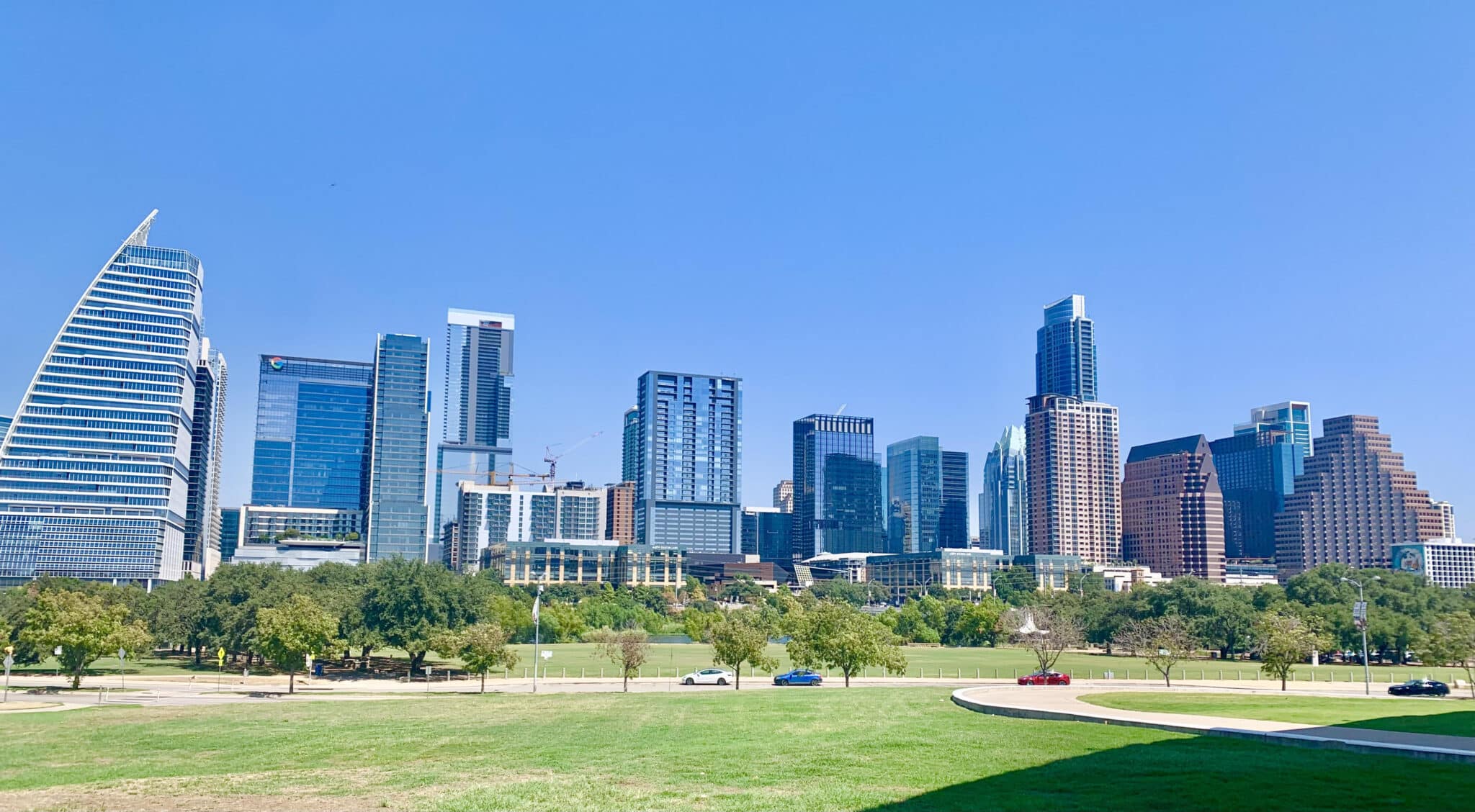
Austin has always been a city of evolution. We went from a laid-back college town to the “Live Music Capital of the World,” and now we’re recognized around the globe as a vibrant tech hub and innovation center. As I look at our tech ecosystem in 2025, one thing is clear: growth has been nothing short of extraordinary. At the same time, questions about sustainability, affordability, and inclusivity demand real attention. Let’s explore how we got here, where we stand now, and what the future might hold.
A Look Back at Austin Tech: The Boom of the Last Decade
- Population Surge: Over the past ten (plus) years, Austin’s population soared to 2.5 million people in the metro area. Tech workers, entrepreneurs, and investors arrived in droves, all searching for a unique alternative to Silicon Valley.
- Big Players, Big Moves: Tesla, Oracle, Meta—you name it, they’ve set up significant outposts here. Their presence solidified Austin’s status as a top-tier tech destination. More tech companies are looking at relocating and opening office thanks to the work of Opportunity Austin and the Austin Chamber.
- Startup Powerhouse: Organizations like Capital Factory, the Austin Technology Incubator, the Founders Institute, Plug and Play, and others have supported founders and allowed startups to thrive in our region. At the same time, the Venture Capital community has grown in size and activity over the past decade, making Austin one of the top cities in the country for funding (Between 2015 and 2023, venture capital funding ballooned by more than 400%).
- Cultural Growing Pains: With this rapid expansion came rising housing costs, overtaxed infrastructure, and waves of gentrification. People started to wonder if this “success” truly benefitted everyone in the city. The past ten years has seen Austin become a little less “weird” than it had been in the past.
- Resilience Through Economic Ups and Downs
Despite market fluctuations and even a global pandemic in the early 2020s, Austin’s tech community showed remarkable staying power. That resilience built investor confidence and proved that the city’s position as a tech leader could transcend good times and bad.
Austin Tech in 2025: Current Realities
- A Firm Identity as a Tech Hub
By now, Austin is firmly on the global tech map. We lead in areas like AI, quantum computing, health tech, and creative technologies, with marquee events like SXSW amplifying our influence. Still, balancing cutting-edge innovation with our local culture and community values isn’t always easy. - Shifting Workforce Dynamics
- Upskilling Local Talent
Despite well-intentioned collaborations with St. Edward’s, UT Austin, Austin Community College, and others, the talent pipeline still isn’t delivering on its full promise. Many aspiring tech professionals find themselves without clear pathways to quality jobs, and the programs that do exist aren’t well-known to the companies seeking to find employees.Inclusivity
Conversations about inclusion have never been louder, but real changes are still needed. Women, people of color, and other underrepresented groups continue to face barriers in Austin’s tech scene. As a city that prides itself on innovation and progress, we need to lead the way in a truly inclusive ecosystem—one where everyone can meaningfully participate and thrive.
- Upskilling Local Talent
- Rising Costs and Accessibility
Housing remains a top concern. Median home prices keep climbing, pushing many middle-income families and young professionals into the suburbs—or out of the region altogether. That shift also influences where businesses choose to set up shop. - Thriving but Competitive Startup Scene
Early-stage funding is holding steady despite the ups and downs of the larger VC market. Still, founders grapple with stiffer competition for top talent and skyrocketing costs, factors that could stifle the growth of smaller startups. - Deepening Roots in Healthcare & Life Sciences
Beyond AI and semiconductors, there’s a growing focus on healthcare innovation. Whether it’s digital health platforms or biotech research, Austin’s tech community is branching out into life sciences—bolstered by collaborations with area hospitals and research institutions.
Challenges on the Horizon
- Infrastructure Strains
Our roads, utilities, and public services are feeling the pressure from breakneck population growth. There are many projects in the works that offer some hope for better transit, but delays have left many Austinites impatient, and the fixes are many years away. - Affordability vs. Growth
There’s no doubt that Austin’s booming success comes with a hefty price tag. When living costs spiral upward, the city risks losing the creative spark and accessibility that first drew tech folks here. Our affordability was one of the reasons people moved here, and we have lost that competitive edge (which means we need to work harder in other areas). - Legislative Uncertainty
There are many issues on the table in Washington DC that will be coming up in 2025. We need our tech leaders to be informed and share their voice on policy. Additionally, state-level policies, especially those touching on social issues, are making some tech leaders hesitant to expand further in Texas. Concerns about attracting and retaining diverse talent loom large. - Maintaining Momentum in Innovation
Now that Austin is an established tech powerhouse, the next big challenge is sustaining that spark—fostering homegrown companies and keeping our innovation engine running strong.
The Road Ahead: Austin’s Tech Future
- Collaboration Is Key
Groups like the Austin Technology Council (ATC) continue to champion collaboration among tech companies, local government, universities, and nonprofits. By focusing on shared priorities—think inclusivity, affordability, policy, and sustainability—we can keep Austin’s community spirit alive. 2025 is the year we need to see more community engagement from everyone, or we risk losing that spark of connected people that has made Austin special for over thirty years. - Emphasis on Regional and Statewide Growth
As more people and companies move to neighboring areas like Round Rock, Cedar Park, Kyle, etc… some of the strain on Austin might ease up. Strategically spreading out the economic boom could create a more balanced, accessible tech landscape. Additionally, Austin is just part of the technology boom happening across Texas. We need to see more conversations and collaborations between companies and organizations in Austin, Dallas, San Antonio, and Houston. - Championing Emerging Technologies
We’ve already carved out a place for ourselves in AI, government technologies, quantum computing, health tech, etc… Expect these sectors to dominate the next wave of innovation, securing Austin’s reputation for forward-thinking leadership. Rather than focusing on being a tech hub (every community now sees itself as a tech hub), we need to shift our attention to being seen as an innovation center. - Preserving Austin’s Culture
This might be our biggest long-term challenge: hanging on to what makes Austin, Austin. From supporting local artists to uplifting communities, it’s up to us—tech leaders, policymakers, and residents alike—to ensure that growth doesn’t wash away our city’s creative soul. We are losing musicians and other artists due to rise in cost of living, and without this element our town becomes just another city. - Nurturing Homegrown Entrepreneurship
While global players have dominated headlines, Austin’s startup community remains vital to the city’s character. Ongoing investment in local incubators, accelerator programs, and coworking spaces will keep fresh ideas flowing and encourage homegrown founders to stay and scale here. We also need to revitalizes our community’s commitment to mentorship. - Bolstering Public-Private Infrastructure Projects
Infrastructure challenges call for stronger collaboration between tech companies, local government, and community organizations. Well-designed public-private partnerships can help tackle traffic congestion, enhance public services, and upgrade utilities to meet escalating demands. Everyone should look for how their vertical can work together with others to ensure Austin is ready for the growth. - Fostering a Strong Education Pipeline
To sustain innovation, Austin must continue investing in STEM education, upskilling programs, and mentorship for underserved communities. Working closely with institutions like St. Edward’s University, UT Austin, and Austin Community College ensures a steady stream of talent that reflects the city’s diverse population. And we should not forget K-12. We need more collaboration between AISD and the local community. - Prioritizing Sustainability and Social Impact
As Austin grows, tech leaders have an opportunity to set new standards in green initiatives and ethical business practices. From renewable energy adoption to equitable workforce policies, embedding social responsibility into the fabric of tech will help Austin remain a model city for inclusive, sustainable growth. These are issues where Austin is uniquely positioned to lead the world.
Looking Toward Austin Tech 2.o (or is it 3.0?)
As we stand in 2025, Austin’s tech community has a pivotal choice to make. The extraordinary growth of the past decades has brought both incredible opportunities and serious challenges. Addressing issues like infrastructure, housing, and inclusivity isn’t optional—it’s essential if we want our city to remain a leader in innovation that truly benefits everyone. We cannot be complacent or dismissive of the changes that are coming to Austin, Texas, The United States, and the world. Emerging technologies are going to impact all aspects of life in our society, and the way to stand out in the new landscape is to stand together.
For the next 12 months we need to look beyond egos and agendas, and look toward being as innovative as a community as our companies look to be in their industries. Austin can show other cities how to navigate the big changes that are coming soon.
Austin thrives on reinvention. If we harness that spirit to build a tech scene that’s open, sustainable, and deeply connected to our local roots, our best days are indeed ahead. The question now is who are our tech leaders that are civic-minded and willing to step up. If we can reignite the vibe of community engagement in 2025, our ecosystem will continue to rise to the occasion and shape a future that leaves no one behind.
*******************************
By Thom Singer, CEO of the Austin Technology Council.
